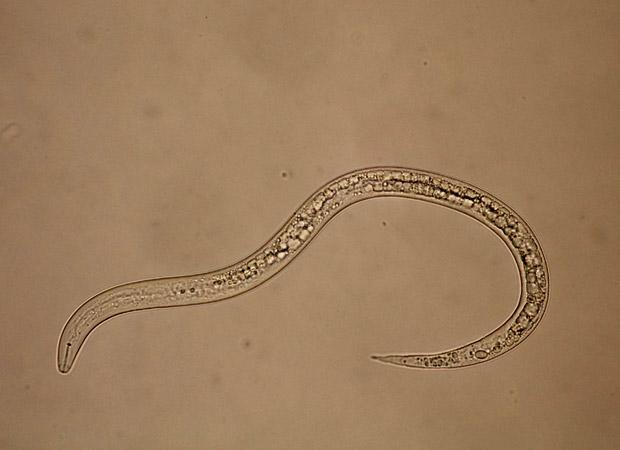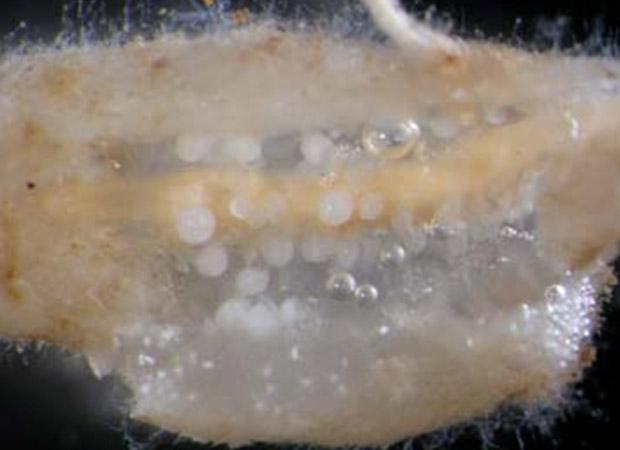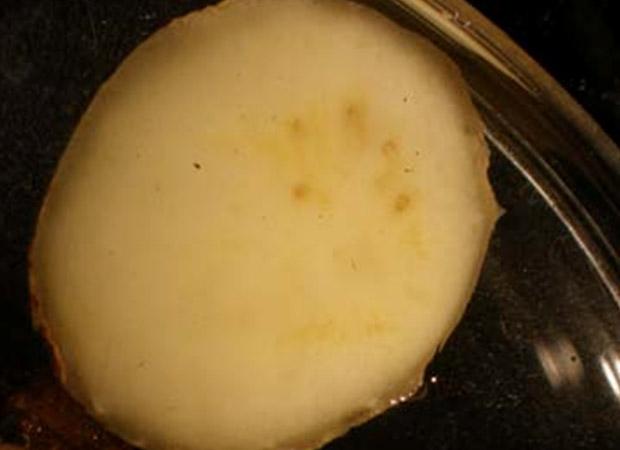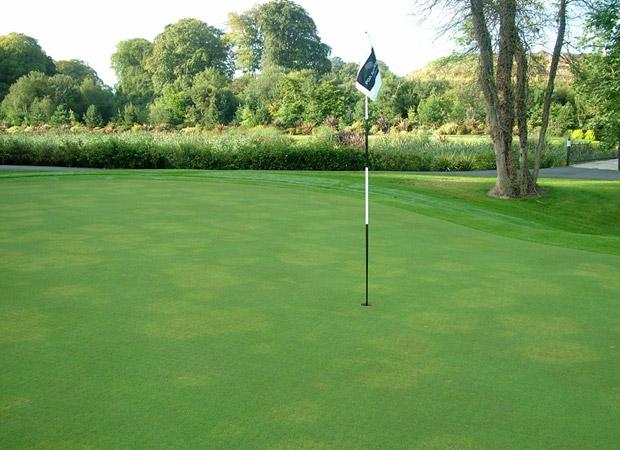Threat
Meloidogyne minor is a direct threat to a range of arable crops, protected crops, pasture and sports turf. The nematode has been detected in north western Europe including all parts of the British Isles and is a current threat to Northern Ireland.

Susceptible species
Grasslands and dune areas are the presumed natural habitat of M. minor. This species has been reported infesting a wide range of grasses, broadleaved weeds and crops including Agrostis stolonifera var. stolonifera (creeping bentgrass), Lolium perenne (perennial ryegrass), Solanum tuberosum (potato), Anagallis arvensis (scarlet pimpernel), Festuca sp. (fescue), Medicago lupulina (black medick), Poa sp. (bluegrass), Phleum pratense (timothy), Trifolium pratense (red clover), Trifolium repens (white clover).
This nematode has also been shown to reproduce on the following hosts under experimental conditions: Avena sativa (oat), Dacus carota (carrot), Hordeum vulgare (barley), Lactuca sativa (lettuce), Lolium multiflorum (Italian ryegrass), Medicago sativa (alfalfa), Phacelia tanacetifolia (phacelia), Solanum esculetum (tomato), Triticum sativum (wheat) and Vicia sativa (vetch).
Spread
The nematode can be spread on infected plant material (e.g. seed potatoes, ware and starch potatoes, traded turf), sand and soil. There is also evidence that the pest can move on machinery and equipment such as golf shoes, golf clubs and sports shoes (athletes, football players).
Outbreak stage and national plans
For current advice see:
Preventing introduction and spread on sportsturf
Possible pathways for the introduction of nematodes into sports turf include the soil/sand/compost used to form the growing media, ready grown-turf, machinery or footwear. Grass seed is unlikely to be infested with Meloidogyne species and so is low risk.
Some risk reduction measures include ensuring:
- Growing media is nematode free.
- Sand for use on sports turf is stored uncovered and weed free for at least nine months, preferably longer before use. This is likely to kill emerging juveniles. An alternative would be to use kiln dried sand.
- Compost used as part of growing media has been composted at a temperature sufficient to kill nematodes.
- Footwear is cleaned before and after use on sports pitches.
- Any machinery that has soil attached should be thoroughly power washed before it is moved between sites.
- Waste turf, topsoil and/or sub-soil (with the exception of grass cuttings) from sports pitches, especially those where nematode damage is suspected, should not be disposed of on agricultural land.
- Work on infested or potentially infested areas that may result in the transfer of soil is undertaken towards the end of the day, following work on other areas.
Distribution
Meloidogyne minor is native to the UK. It has also been reported from the Netherlands, Belgium, Republic of Ireland, Portugal, Chile, New Zealand and the United States. Due to its relatively recent description, the geographical distribution of this species has not yet been fully recorded.
Symptoms
Typical symptoms of infestation by root-knot nematodes including Meloidogyne minor are gall formation on roots and tubers. However, above-ground symptoms observed on infected plants are similar to those produced on any plants having a damaged and malfunctioning root system. Symptoms include:
- (i) suppressed shoot growth and accompanying decreased shoot–root ratio;
- (ii) nutritional deficiencies showing in the foliage, particularly chlorosis;
- (iii) temporary wilting during periods of mild water stress or during midday, even when adequate soil moisture is available; and
- (iv) suppressed plant yields.
The importance of these symptoms is often related to the number of juveniles penetrating and becoming established within the root tissue of young plants. The common explanation for these above-ground symptoms is that Meloidogyne infection affects water and nutrient uptake and upward translocation by the root system.


In sportsturf, root damage may cause areas of weak yellowing turf.

Reporting suspected cases
See contact information below.
Management, grants, treatment
See contact information below.
Origins
M. minor is an emerging native pest in the British Isles.
Pest risk analysis
Import & movement restrictions
Statutory action will not be taken against findings of Meloidogyne minor and it is not necessary to notify the authorities if the pest is found.
Further information
- secure.fera.defra.gov.uk/phiw/riskRegister/
- www.gov.uk/plant-health-controls
- Root Knot Nematodes Information Leaflet
Contact
For Northern Ireland, contact:
Plant Health Inspection Branch
DAERA Northern Ireland
Tel: 0300 200 7847
Email: planthealth@daera-ni.gov.uk
